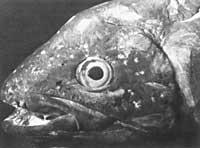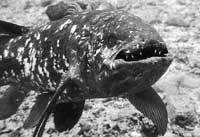Beings that have escaped evolution
2000/01/01 Dickn, Lynn Iturria: Elhuyar aldizkaria

Txissst! ! News The ocean floor shows movement. From the cave, located 200 m deep on the surface of the sea, about ten fish have emerged. It's dark, but if you can see it right, you'd notice the blue color of cobalt, the white spots, and the size of a person. Swimming slowly but surely, they plunge into the darkness of the ocean bottoms and disappear. Each for his part, prepared for a night of hunting. Something similar has been repeated every night in the last 400 million years on the African coast. Because the fish described are celacantos, one of the oldest surviving beings on Earth.
In that distant time when the first vertebrates came out of the water and placed their feet in dry land, the celacantos had already filled the world's oceans well; their neighbors were the trilobites and some molluscs. The group of celacantos lived its golden age 200 million years ago, when we could find it in all kinds of environments. But since the Triassic (period before the Jurassic, which began about 245 million years ago and lasted 37 million years) the population has been decreasing and currently we can only find it in two places: Around the Komore islands located next to Madagascar and in the sea of Sulawesi or Celebes in Indonesia.

Darwin baptized living fossils to beings that, like celacantos, have survived for millions of years without changing. They are beings that form a small group. Ginkgo trees (the type of tree that grows in China, used as ornamental) shared the Earth with dinosaurs 125 million years ago. Crocodiles have not changed in the last 140 million years. Horseshoe crabs are 200 million years old. The specimens of the brachiopod group called Lingula have been living in deep seas for 450 million years. The molluscs of the genus Neopilina, between molluscs and worms, remain as they were 500 million years ago. Have they found a special formula to survive or are they the fruit of happy happenings?
99.9% of the species that have existed on Earth have disappeared today. The average life span of pluricellular species ranges from 1 to 15 million years and has a history of 600 million years in which species have appeared, evolved and disappeared. In that period of time there were 5 massive extinctions that disappeared from 76 to 96% of the total species that lived at the time. The Earth has also undergone major changes in its physical and biological conditions.
Certainly, chance, or rather happiness, has much to say in the conservation of living fossils. But each case must be analyzed individually. The ingulas live on the seabed and most similar species survived the massive extinctions that caused them. The key to their survival may be their ability to bury and reside in the sand.
But it can be an event of congratulations, the key to the duration of the tuatar. Tuatara, Sphenodon punctatus, is a reptile that lives only in New Zealand, older than many dinosaurs. 200 million years ago fenodontios (reptiles of the same group as the tuatar) lived in almost the entire planet. More than 120 million years later, that is, 80 million years ago, New Zealand separated from the then continent of Gondwanaland and, at the will of chance, New Zealand had no mammals. The natural competition caused by the presence of mammals caused the disappearance of fenodontians elsewhere, while in New Zealand they reproduced and expanded without any pressure.
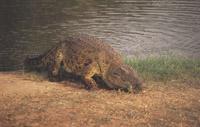
But only chance can explain the duration of reptiles and many other living fossils. Biologists who analyze evolution seek a strategy that can be behind the success of these beings. One way to perpetuate yourself is to live everywhere, like cockroaches. Cockroaches do not need a specific environment to live; they are opportunistic animals with great capacity to adapt to different means. Thanks to this they have been on Earth for 250 million years. When living fossils have been compared to those of relatives closest to today, it has been detected that they are often more ecologically specialized. And, therefore, with greater risk of extinction.
The impal, for example, is not an ancient relic, but in the last 7 million years it has not changed. However, from other relatives to this type of antelope, 32 different species have been formed, most of them disappeared today. The Input is a fully rigid animal that can live in many ecosystems in Africa. In case of alteration of the vegetation, the impact will eat something else, while the other antelope will not be able to suffer alterations and will die.
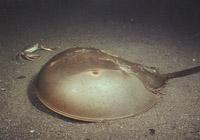
But the lack of specialization also does not explain the duration of all living fossils. Celacanthus is adapted to the living conditions of the seabed and only lives in volcanic caves. It is therefore a specialized animal that has kept its life steady for 400 million years. Why? Celacanthus is the animal that consumes the least oxygen from all vertebrates. As a result, its low need for food allows it to live in regions with very few prey. These characteristics allow the celacanthus to reside in the caves of the seabed in areas that have hardly changed for millions of years.
Celacanthus is not the only fossil that survives thanks to the stability of the medium. There is a bacterium that lives in warm places and that appeared 3.5 billion years ago, when the Earth was still hot and life was in its beginnings. He currently lives in Yellowstone Park in boiling waters and the habitat of the bacteria is basically the same.
Other living fossils, on the other hand, have managed to preserve their primitive form because they respond slowly to changes. Slums, for example, live long. They reach sexual maturity at age 15, continue to grow until age 30 and live more than a hundred years. Also the nautilus, distant relatives of octopus, the only species that survives the group of molluscs, owners of the seas 300 million years ago, have a long life and reproduce slowly compared to their modern relatives. Slow proliferation means that natural selection will affect them more slowly, helping to explain why they have not changed over time.
But there are also living fossils that have a very short life and reproduce quickly, such as the cucarachos or bacteria mentioned above. What other explanations can be sought to explain the inevolution of these beings? As all around them evolved, why did they remain in their form? Some believe that living fossils were not modified because of the risks that the changes themselves could pose. The theory is based on the fact that the organism of these beings is so complex that a characteristic cannot change without destroying other characteristics. But it is very difficult to prove this theory.

Another factor that can slow evolution is evolution itself. Some biologists believe that living fossils have been biologically suspended for millions of years because they do not have enough genes to improve their design. This is the case of amphibiodes, animals in the form of small fish that inhabit marine sediments. They are very similar to the creatures that preceded vertebrates and have not varied since the Cambrian period (first period of the Paleozoic, which began 750 million years ago and lasted about 60 million years). They present a degree of potential complexity with the number of genes that contain amphoxides.
In those first moments of the evolutionary path from primitive beings to vertebrates there was a doubling of the number of genes. But the anphilis did not suffer this duplication and currently still have about 20,000 genes. The vertebrates that have formed below have about 70,000 genes. Not doubling the number of genes in amphoxides is a mystery that was a random event or that hides some biological reason.
However, the inability to evolve cannot determine the duration of all living fossils, since many of them come from groups of great biodiversity. Crocodiles, for example, have not changed in the last 140 million years, but come from a large group of ancient aquatic predators with many different shapes, sizes and life forms. Formerly there were crocodiles with a very high end and similar to the duck beak, even with toads. But all that diversity was lost and, for an unknown reason, all current crocodiles are equal. Whatever the factor that motivated the draw, he was not unable to evolve and give different species, since in his day they were able.
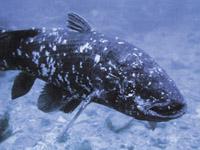
And what is the consequence of all this? That the secret of special survival is not unique and there may be as many reasons as species are known. General or specialized. Live fast or slowly. Be simple or complex. Be in the right place at the moment. And if all this fails, it becomes a "superspecies" that can overcome anything. Horseshoe-shaped crab offspring, for example, are more resistant to contamination than any other aquatic arthropod; ginkos are increasingly frequent in cities, as they well withstand air pollution.
As far as human beings are concerned, perhaps we also have what is necessary to become living fossils. Or maybe not.
Life and statistics
The average life span of a species ranges from one million to fifteen million years, to whom you ask. The duration of life is different for one type or another of organism: in general, marine beings remain longer than terrestrial beings, perhaps because the marine environment changes less. Mammals, on the other hand, are at the top of the pyramid, with the highest speeds of creation and disappearance of species. Mammals have a short generation time and a high degree of fertility, so they also genetically change rapidly creating new species. J
being aquina, humans are also mammals. But how much is our life? J. Princeton University Physicist Richard Gott estimates that the species Homo sapiens, ours, will have a life of between 0.2 and 8.1 million years. The calculation is based on the time we have already been on Earth. Scientists usually calculate with a 95% reliability level. That is why Richard Gott assumes that we are not in the 2.5% in the first or the last interval of time that will touch to live our species. Therefore, if the 200,000 years that have passed through the Earth are between 2.5% and 97.5%, we have at least 5,100 more years left. From there we can disappear at any time or live 8 million years. However, we all know what statistics are said.

Gai honi buruzko eduki gehiago
Elhuyarrek garatutako teknologia



